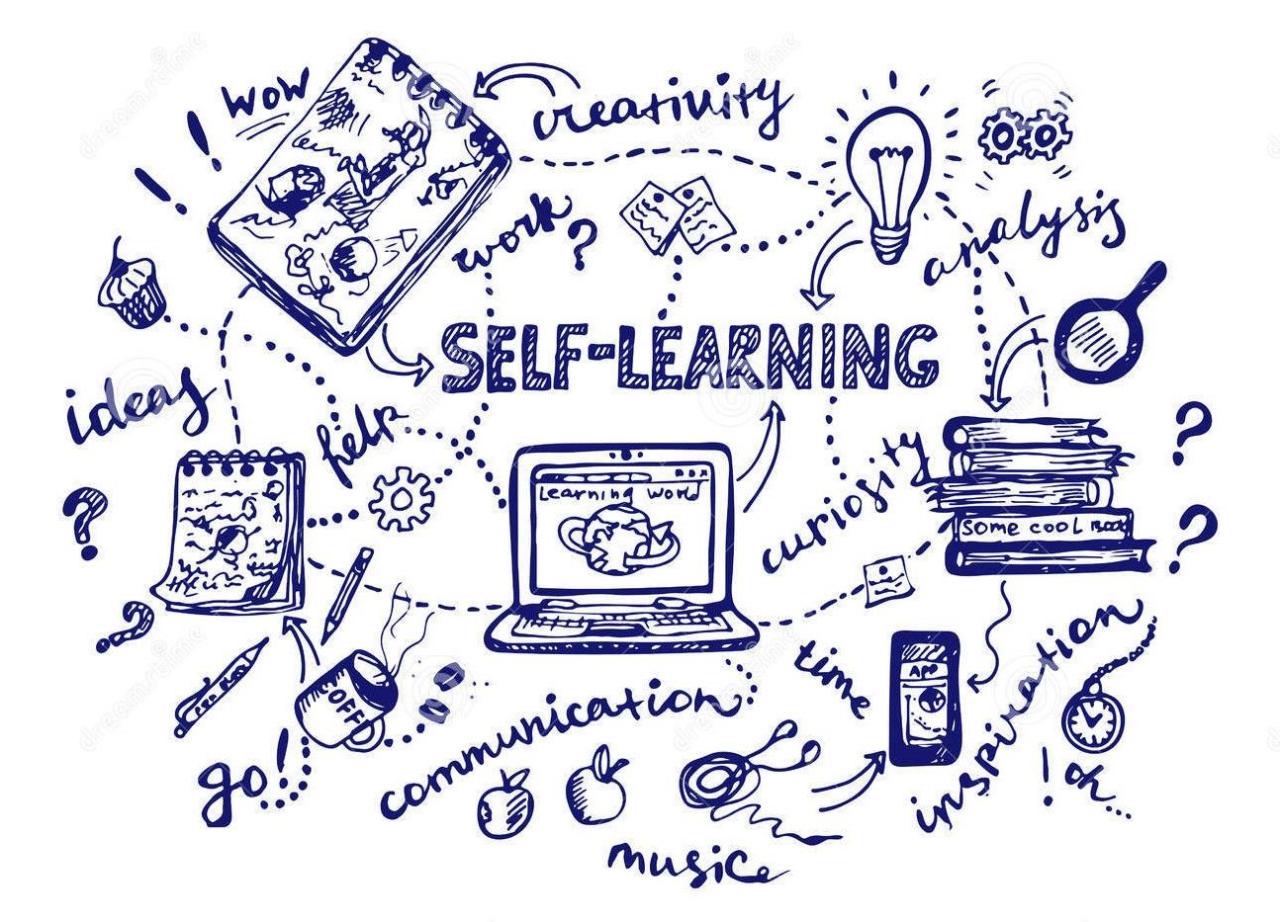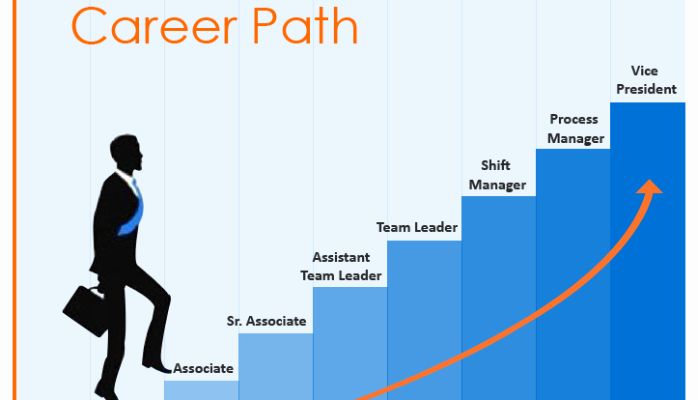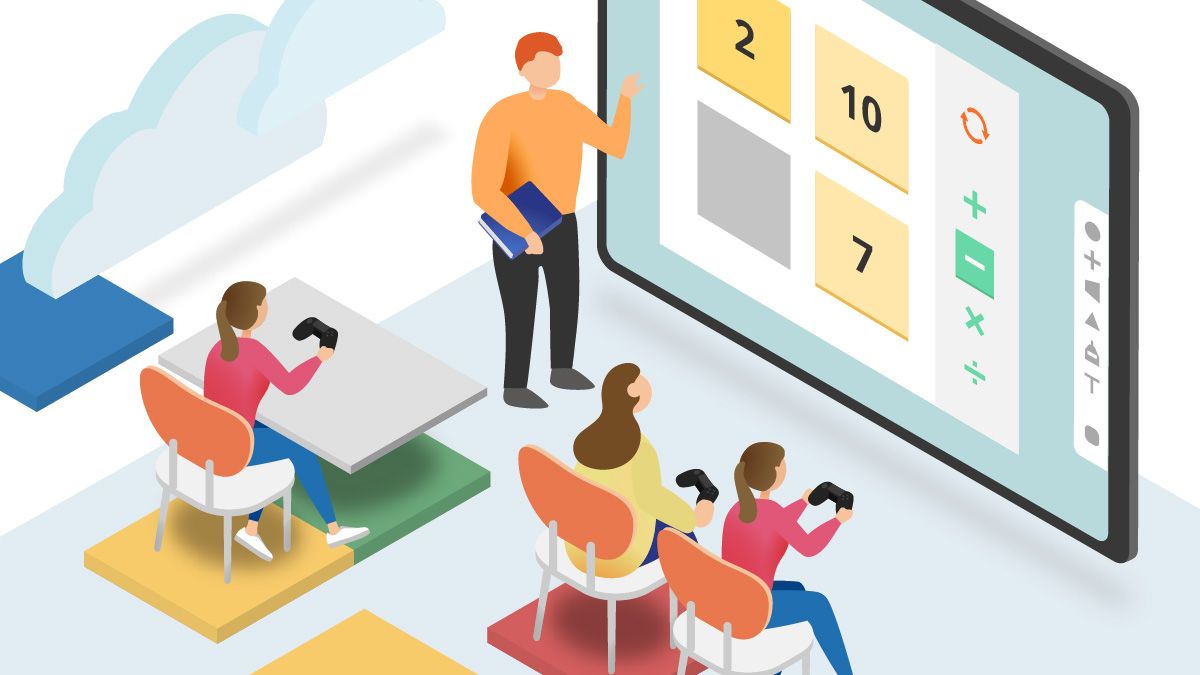
Future Skills: What Students Need
The landscape of work is shifting at an unprecedented pace. Automation, artificial intelligence, and global interconnectedness are reshaping industries and redefining what it means to be skilled. For students navigating today’s educational system, preparing for a future that’s still being written is a daunting task. The traditional emphasis on rote memorization and standardized testing is rapidly becoming obsolete. Instead, the focus must pivot towards cultivating future skills: a dynamic blend of cognitive, interpersonal, and technological proficiencies that empower individuals to adapt, innovate, and thrive in an increasingly complex world. This isn’t just about getting a job; it’s about fostering resilience, critical thinking, and continuous learning, all of which are vital for personal and professional fulfillment. For content creators, this topic on educational evolution and essential capabilities is a powerful driver for high Google AdSense revenue, drawing in educators, parents, and students eager to understand tomorrow’s demands. This comprehensive article will delve into the critical competencies that students need to master, exploring how these skills are developed, why they are so crucial, and the innovative pedagogical approaches that can integrate them into modern learning environments.
The Shifting Paradigm: Why New Skills Are Essential
The Fourth Industrial Revolution, characterized by the fusion of technologies blurring the lines between physical, digital, and biological spheres, is fundamentally altering the job market. Repetitive, rule-based tasks are increasingly handled by machines, leaving humans to focus on areas that require uniquely human attributes. This rapid evolution necessitates a proactive approach to education, moving beyond the curriculum of yesteryear.
Why are these “future skills” so critical?
- Automation Resilience: As AI and robotics take over routine tasks, humans must develop skills that machines can’t replicate, such as creativity, emotional intelligence, and complex problem-solving.
- Constant Change: The pace of technological and societal change demands adaptability and a lifelong learning mindset. Skills learned today may be obsolete tomorrow, but the ability to learn new skills rapidly will remain invaluable.
- Global Collaboration: Interconnectedness means working with diverse teams across cultures and time zones, requiring strong communication and cross-cultural understanding.
- Complex Problem Solving: The world faces wicked problems—climate change, pandemics, social inequality—that require interdisciplinary approaches and innovative solutions.
- Ethical Considerations: As technology advances, ethical dilemmas become more prevalent. Students need to develop strong ethical frameworks to navigate these complexities responsibly.
- Personal Agency: In a rapidly changing world, individuals need to take ownership of their learning and career paths, demonstrating initiative and self-direction.
These skills represent a paradigm shift from content consumption to capability development, preparing students not just for specific roles, but for a future of continuous evolution.
Core Pillars of Future Skills: A Comprehensive Overview
While various frameworks exist, the essential future skills can be broadly categorized into several key pillars. These are interconnected and mutually reinforcing, forming a robust foundation for success.
A. Critical Thinking and Problem-Solving
At the zenith of desirable future skills lies the ability to think critically and solve complex problems. This isn’t merely about finding answers; it’s about asking the right questions, analyzing information deeply, and devising innovative solutions to novel or ill-defined challenges.
- Analytical Reasoning: The capacity to break down complex information, identify patterns, and draw logical conclusions. This involves evaluating data, identifying biases, and discerning facts from opinions.
- Synthesis and Evaluation: Beyond analysis, this involves combining disparate pieces of information to form new insights and then judging the validity, relevance, and significance of various arguments or data points.
- Creative Problem Solving: Moving beyond conventional solutions, this skill involves ideation, brainstorming, and thinking outside the box to generate novel approaches to challenges that lack clear precedents. It embraces experimentation and learning from failure.
- Decision-Making: The ability to weigh options, assess risks and benefits, and make informed choices, often under uncertainty or with incomplete information. This includes understanding the potential consequences of different actions.
- Systems Thinking: Recognizing how individual components interact within a larger system and understanding feedback loops. This allows students to identify root causes of problems rather than just treating symptoms, leading to more sustainable solutions.
Developing these skills requires exposure to real-world problems, opportunities for debate, and projects that demand independent inquiry rather than memorization.
B. Creativity and Innovation
In a world where routine tasks are automated, the capacity for original thought and the ability to innovate become paramount. Creativity is not just for artists; it’s a vital skill for every profession.
- Idea Generation: The ability to produce a wide range of diverse ideas, often through techniques like brainstorming, mind mapping, or SCAMPER (Substitute, Combine, Adapt, Modify, Put to another use, Eliminate, Reverse).
- Originality: Developing unique concepts or solutions that depart from conventional approaches. This involves challenging assumptions and exploring unconventional pathways.
- Elaboration and Refinement: Taking initial ideas and developing them into practical, actionable plans. This includes iterating on concepts, seeking feedback, and refining designs or strategies.
- Risk-Taking and Experimentation: A willingness to try new things, embrace uncertainty, and learn from both successes and failures. Innovation rarely happens without some degree of calculated risk.
- Interdisciplinary Thinking: Drawing connections and insights from seemingly unrelated fields to spark new ideas. This fosters novel solutions that emerge from the intersection of different knowledge domains.
Cultivating creativity demands environments that encourage exploration, curiosity, and a safe space for unconventional thinking.
C. Collaboration and Communication
As work becomes increasingly team-based and global, the ability to work effectively with others and convey ideas clearly is indispensable.
- Active Listening: The cornerstone of effective communication, involving fully concentrating on what is being said, both verbally and non-verbally, to truly understand the speaker’s message.
- Effective Verbal Communication: Articulating thoughts, ideas, and arguments clearly, concisely, and persuasively in various contexts (presentations, discussions, negotiations). This includes adapting communication style to different audiences.
- Written Communication: Producing clear, coherent, and impactful written materials, whether reports, emails, proposals, or creative content. This includes proper grammar, syntax, and structure.
- Teamwork and Conflict Resolution: Working harmoniously within diverse teams, contributing effectively, and navigating disagreements constructively to achieve shared goals. This involves empathy, negotiation, and mediation skills.
- Cross-Cultural Communication: Understanding and respecting diverse cultural norms, communication styles, and perspectives to facilitate effective interaction in globalized environments. This avoids misunderstandings and builds stronger international relationships.
- Digital Communication Etiquette: Mastering effective communication across various digital platforms, understanding the nuances of virtual meetings, email, and collaborative tools.
These skills are best honed through project-based learning, group assignments, and opportunities for peer feedback.
D. Digital Fluency and Data Literacy
In an increasingly data-driven, technologically saturated world, comfort and proficiency with digital tools and the ability to interpret data are fundamental.
- Technological Proficiency: Beyond basic computer skills, this involves adapting to new software, platforms, and emerging technologies quickly and efficiently. It’s about being a digital native, not just a digital user.
- Data Interpretation: The ability to understand, analyze, and draw meaningful conclusions from various forms of data (charts, graphs, statistics). This includes recognizing data biases and limitations.
- Cybersecurity Awareness: Understanding the basics of digital security, protecting personal and organizational data, and recognizing online threats. This is critical in an era of increasing cybercrime.
- Ethical Technology Use: Reflecting on the societal implications of technology, understanding issues like privacy, algorithmic bias, and digital ethics. This fosters responsible and conscientious technology use.
- Digital Content Creation: Basic skills in creating digital content for various platforms, whether it’s presentations, simple videos, graphics, or written online materials.
Integrating coding, data analysis tools, and digital media projects into the curriculum is vital for developing these competencies.
E. Adaptability and Resilience
The future promises constant change, making the ability to adapt to new situations and bounce back from setbacks absolutely essential.
- Flexibility: The willingness and ability to adjust to new information, changing circumstances, and unexpected challenges without undue stress.
- Growth Mindset: Believing that one’s abilities can be developed through dedication and hard work, rather than being fixed. This fuels continuous learning and perseverance.
- Stress Management: Developing healthy coping mechanisms for dealing with pressure, uncertainty, and setbacks. This includes emotional regulation and self-care strategies.
- Learning Agility: The capacity to quickly learn from experience, adapt to new roles or environments, and apply new knowledge effectively in different contexts.
- Problem Recovery: The ability to analyze failures, extract lessons, and apply them to future endeavors, turning setbacks into opportunities for growth.
Fostering resilience requires encouraging a culture where mistakes are viewed as learning opportunities and where students feel supported in exploring new territories.
F. Emotional Intelligence and Empathy
Understanding and managing one’s own emotions, and recognizing and influencing the emotions of others, are increasingly valued in human-centric roles.
- Self-Awareness: Recognizing one’s own emotions, strengths, weaknesses, values, and goals, and understanding their impact on others.
- Self-Regulation: Managing disruptive emotions and impulses, maintaining integrity, and demonstrating trustworthiness. This includes controlling anger, anxiety, and frustration.
- Motivation: A passion to work for reasons beyond money or status, a propensity to pursue goals with energy and persistence. This involves optimism and drive.
- Empathy: The ability to understand and share the feelings of another, seeing situations from their perspective. This is crucial for collaboration and customer service.
- Social Skills: Proficiency in managing relationships, building networks, and inspiring others. This includes communication, conflict resolution, and persuasion.
Developing emotional intelligence benefits from collaborative projects, diverse interactions, and explicit discussions about feelings and perspectives.
Cultivating Future Skills: A Roadmap for Education

Integrating these future skills into traditional education requires a fundamental shift in pedagogical approaches. It’s not about adding more subjects but about teaching existing subjects differently and creating rich learning experiences.
A. Project-Based Learning (PBL)
PBL is a powerful methodology where students learn by actively engaging in real-world, meaningful projects.
- Authentic Challenges: Projects should present complex, open-ended problems that mirror real-world scenarios, demanding critical thinking and problem-solving.
- Collaboration and Communication: PBL naturally requires students to work in teams, communicate ideas, negotiate roles, and resolve conflicts.
- Inquiry and Research: Students must research, gather information, and synthesize knowledge from various sources, fostering data literacy and analytical skills.
- Creativity and Innovation: Projects often require students to devise novel solutions, design prototypes, and present original ideas.
- Presentation and Reflection: Students present their findings or creations, honing communication skills, and reflect on their learning process, fostering self-awareness and learning agility.
PBL shifts the role of the teacher from lecturer to facilitator, guiding students through discovery.
B. Personalized and Adaptive Learning
Recognizing that every student learns differently, personalized learning tailors educational experiences to individual needs, paces, and preferences.
- Differentiated Instruction: Providing varied approaches to content, process, products, and learning environment to meet individual student needs.
- Adaptive Technologies: Utilizing AI-powered platforms that adjust learning pathways based on student performance, providing targeted support or accelerated challenges.
- Student Agency: Empowering students to take ownership of their learning goals, choose learning methods, and track their own progress.
- Competency-Based Learning: Focusing on mastery of specific skills rather than seat time. Students advance once they demonstrate proficiency, regardless of how long it takes.
This approach fosters self-direction, resilience, and a love for lifelong learning.
C. Experiential Learning and Internships
Learning by doing, through simulations, apprenticeships, or internships, provides invaluable practical experience.
- Real-World Application: Applying theoretical knowledge to practical situations, cementing understanding and developing problem-solving skills in context.
- Skill Transfer: Practicing communication, collaboration, and critical thinking in professional settings.
- Mentorship: Learning from experienced professionals, gaining insights into industry practices and ethical considerations.
- Career Exploration: Providing opportunities to explore different career paths and understand workplace dynamics.
Experiential learning bridges the gap between academic knowledge and real-world demands, making skills tangible.
D. Digital Literacy Integration Across Curricula
Digital fluency should not be a standalone subject but woven into every aspect of the curriculum.
- Coding and Computational Thinking: Introducing foundational coding concepts to develop logical thinking, problem-solving, and algorithmic reasoning.
- Data Analysis Tools: Teaching students how to use spreadsheets, databases, and visualization tools to interpret and present data.
- Digital Citizenship: Educating students on responsible and ethical online behavior, cybersecurity, and media literacy.
- Collaborative Digital Platforms: Utilizing tools like Google Workspace, Microsoft Teams, or Miro for group projects, fostering digital communication and collaboration.
This ensures students are not just consumers of technology but active, informed participants in the digital world.
E. Social-Emotional Learning (SEL) Programs
Explicitly teaching and nurturing emotional intelligence and interpersonal skills is crucial for holistic development.
- Self-Awareness Activities: Exercises that help students identify their emotions, strengths, and personal values.
- Empathy Building: Activities that encourage perspective-taking, understanding diverse backgrounds, and responding to others’ emotions with compassion.
- Conflict Resolution Strategies: Teaching students constructive ways to manage disagreements and negotiate solutions peacefully.
- Relationship Building: Fostering positive peer and mentor relationships through group activities and mentorship programs.
SEL helps students manage their own well-being and build strong, productive relationships, which are vital for any collaborative environment.
Challenges and Opportunities in Future Skills Education

Transforming education to prioritize future skills presents both significant challenges and immense opportunities.
A. Challenges
- Teacher Training: Educators need extensive professional development to shift from traditional teaching methods to facilitating inquiry-based, project-based, and personalized learning.
- Curriculum Redesign: Existing curricula are often rigid and content-heavy, requiring significant overhaul to integrate skills-based learning effectively.
- Assessment Methods: Traditional standardized tests are ill-equipped to measure complex skills like creativity, collaboration, or critical thinking. Innovative assessment methods are needed.
- Resource Allocation: Investing in new technologies, smaller class sizes for personalized attention, and professional development requires substantial financial commitment.
- Parental Expectations: Many parents are accustomed to traditional educational models and may need to be educated on the value of future skills over rote memorization.
- Equity and Access: Ensuring that all students, regardless of socioeconomic background, have access to the necessary technology, resources, and skilled educators is paramount.
B. Opportunities
- Enhanced Student Engagement: Future skills-focused learning is often more engaging, relevant, and intrinsically motivating for students, leading to better outcomes.
- Stronger Workforce Readiness: Graduates equipped with these skills will be highly adaptable and desirable in the rapidly evolving job market, benefiting national economies.
- Innovation and Economic Growth: A population with strong creative and problem-solving skills is better positioned to drive innovation and create new industries.
- Global Competitiveness: Nations that effectively integrate future skills into their education systems will foster a more competitive and adaptable workforce on the global stage.
- Personal Fulfillment: Developing these skills empowers individuals to lead more purposeful, resilient, and adaptive lives, capable of navigating complexity and contributing meaningfully to society.
The transition is undoubtedly complex, but the long-term benefits of prioritizing future skills outweigh the difficulties, promising a more capable and resilient generation.
Empowering the Next Generation for Tomorrow
The imperative to equip students with future skills is no longer a theoretical debate but a pressing global necessity. As the world becomes increasingly complex, volatile, and digitally driven, the ability to think critically, innovate creatively, collaborate effectively, navigate digital landscapes, adapt to change, and leverage emotional intelligence will define success. Education systems worldwide must pivot decisively from mere knowledge transmission to holistic skill development, transforming classrooms into dynamic hubs of inquiry, collaboration, and real-world problem-solving. This requires a concerted effort from policymakers, educators, parents, and communities to embrace innovative pedagogical approaches like project-based learning, personalized pathways, and integrated digital literacy. By focusing on these essential competencies, we empower the next generation not just to cope with an unpredictable future, but to actively shape it. Investing in these skills today is investing in a more adaptable, resilient, and innovative society tomorrow, making it a topic of paramount importance for broad public engagement and for content creators seeking to deliver high-value information that resonates with contemporary concerns.


